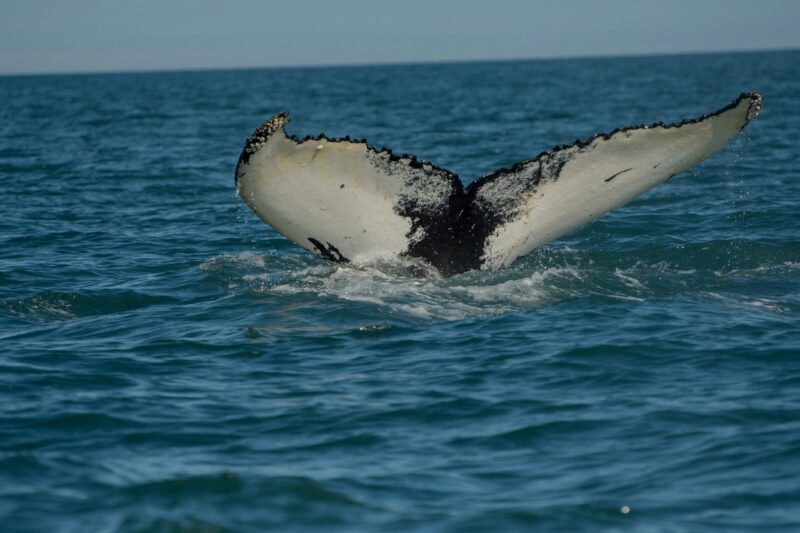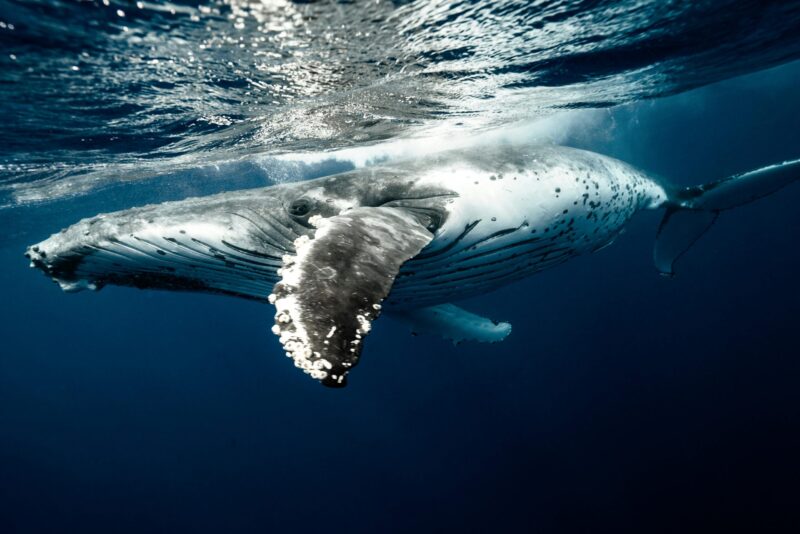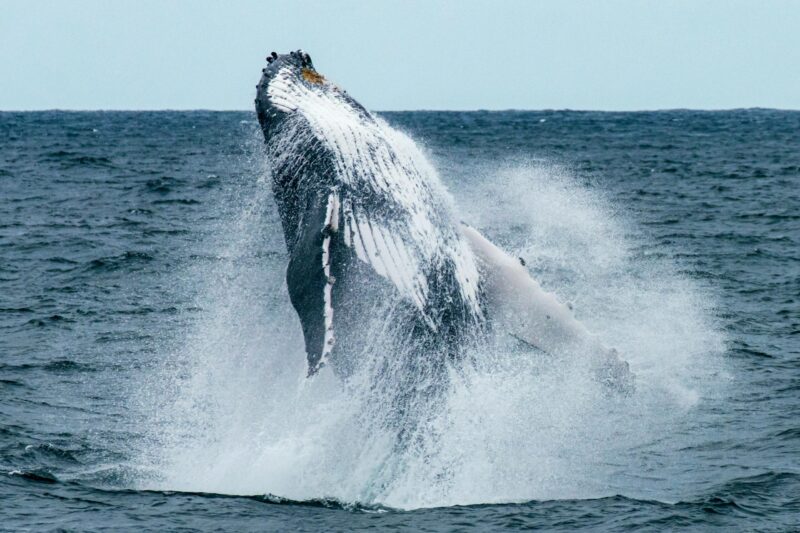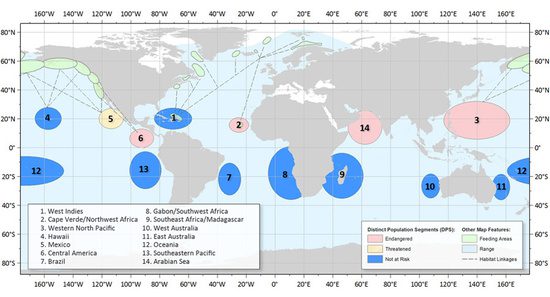Alexandra E. Petri wrote an interesting article about a humpback whale, published in The New York Times on December 12, 2024. She describes a male humpback whale that traveled three oceans, during the years 2013 to 2022. This whale has now broken the record for the longest documented distance yet traveled by a humpback. The animal undertook a journey of some 8,000 miles (12,875 km), from breeding grounds in Colombia in South America to breeding grounds in Zanzibar in Africa.
An international team of scientists from South America, Africa and other parts of the globe studied this whale’s journey. At first, they thought their information – which came in the form of photos from whale-lovers around the globe – was in error. They couldn’t believe it was one whale covered all this distance. Scientists have known this whale species to travel long routes from north to south. But they typically don’t travel long east-west, or west-east, distances.
Using AI to find the whale
The whale hasn’t been fixed with a tracker. The scientists ultimately used an artificial intelligence (AI) platform to identify it, aided by whale-loving photographers. Petri wrote in the Times:
… scientists looked at pictures on Happywhale, an online platform that collects photos of whale flukes – or tails – from scientists and members of the public from around the world. The platform uses artificial intelligence-powered photo-matching algorithms to help automatically identify the whales in submitted photos. Those matches were confirmed or rejected by data managers, the study said.
And it seemed there was no error. In this case, the scientists identified the same whale in both continents, thanks to markings on its tail.
What route did it take?
Th researchers first sighted this humpback whale in Colombia, northwest of South America, in 2013. Four years later, in 2017, they spotted it in Bahía Solano, roughly 48 miles (77 km) from the 2013 sighting location. It was seen again in Zanzibar, east of Africa, in 2022. Since there was no tracker attached to the animal, it is not known what specific route he took.
Scientists believe he may have passed through Antarctica, making an even longer journey. What they know is that the minimum distance between one country and another is 8,000 miles, a record for this species. Therefore, this animal has traveled through the Pacific, Atlantic and Indian oceans.
According to NOAA, this species can travel about 5,000 miles (8,046 km) from north to south to feed or mate depending on the season, but it is not common to see it moving from east to west, or vice versa:
They can travel great distances during their seasonal migration with some animals migrating 5,000 miles between high-latitude summer feeding grounds and winter mating and calving areas in tropical waters.
Another curious fact is that this whale is an adult male. Adults tend to repeat the same routes, but that’s not the case with this whale. Ted Cheeseman, a marine ecologist at Southern Cross University in Australia and one of the authors of the study, told The New York Times:
By the time humpback whales are adults they’re usually in very fixed, consistent patterns. This whale did something totally different.
A mistake in the AI data?
Ted Cheeseman is also a co-founder of the online platform Happywhale, which collects photos of whales uploaded by experts and the general public from around the world. The database not only contains more than 900,000 photos of whale tails, but it uses algorithms to identify these animals. Tails are like our fingerprints, as they have unique coloration, marks and details that differentiate them from each other.
So rare is the case of a whale making such a long journey, and so far from its usual route that, at first, Cheeseman thought it was a mistake. He told The New York Times that:
… the immediate reaction was: This is a mistake. One of these photos is out of place.
However, it was confirmed that it was the same whale thanks to the thousands of images. Scientists also knew that it was a male because, Petri’s article explained:
… He was competitively active in the mating pods he traveled with and because of a photo of its genital area, according to the study.

Why this long journey?
The study suggested several possible reasons for the long journey of this whale. He might have been looking for a mate, or for places to feed. Or, due to climate change, he might have had to search a bit for waters that suited his needs. After all, humpback whales can live to be 80 to 90 years old.
According to the study, an increase in the whale population may influence the migration of these animals. Populations have recovered in recent decades after being decimated by commercial whaling.
Population increases may also be a driver of these breeding ground shifts, when animals may need to explore new breeding and/or feeding areas due to competition from larger, more established males in both areas. The exact cause or drivers of these breeding habitat shifts can only be speculated due to the current limited data availability on humpback whale behavioral ecology.
According to the International Whaling Commission:
As many populations of humpback whales increase in number following the moratorium on whaling, the species appears to be expanding its range.

Why is it important to conduct further studies?
In any case, this is a single individual. In order to understand why this journey took place and whether other members of this species might also be changing their habits, it is necessary to observe other members of the species. Olaf Meynecke, a marine scientist and manager of the Whales and Climate research program at Griffith University in Australia, said to The New York Times:
It would be more powerful to have multiple individuals, and not just looking at one individual whale. This automated fluke (tail) recognition really helps us to find individuals, and then understand their movement patterns a lot better.
Ted Cheeseman added:
There is no humpback whale in the world that lives only within one nation’s waters. These are international waters and multinational waters, and we need to, as researchers and as a community who care about the oceans, we need to manage them accordingly. We need to protect them as international and connected waters.

Bottom line: A humpback whale broke the record for the longest distance ever documented in this species. This male undertook a journey from South America to Africa, travelling through three oceans.
Read more: Whales are the biggest living animals: Lifeform of the week
Read more: Humpback whales manufacture and wield tools
Read our previous article: Archaeology On Mars: Preserving Artifacts of Our Expansion Into the Solar System
